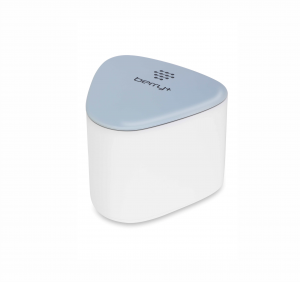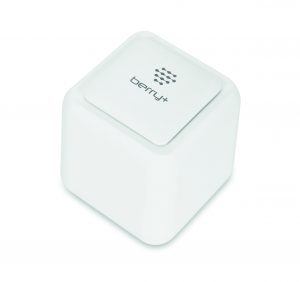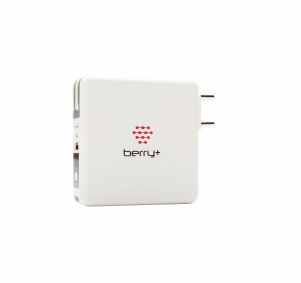1) My WiFi printer / WiFi voice assistant doesn’t pair with my 5GHz internet SSID.
If you do not have a display on the device that shows you the network SSID you can connect to, and you cannot connect to your 5GHz internet SSID, it is very much possible that the device you are dealing with, does not support network transmitted on 5GHz network. In that case, refer to the device’s manual to reset the WiFi settings and then connect it to the Berry+Mesh_Connect SSID
2) I had another dual band router before, which had two distinct SSIDs for 2.4 GHz band and 5 GHz band respectively and I could connect to either manually as needed. Why can’t I do that on BerryPlus device?
BerryPlus Wave and Freedom devices use WiFi 5 standards, which transmits WiFi signal largely on 5GHz band, but in the backend, it also supports 2.4GHz band, even if it doesn’t show a separate SSID for it by default. You will no more more be needed to switch frequency bands manually. Your device will automatically connect to 2.4GHz or 5GHz band, whichever is a stronger signal from the range you are in. Although, you can still configure your device to setup distinct SSIDs for both frequency bands for your convenience.
3) I am not a tech savvy person and I do not understand all the configuration options you provide on the router’s web portal.
Please refer to the administration guide for the umpteen possible admin options to configure.
4) How do I install new firmware on my Berry+ devices?
If a new firmware update is available for your device, you will be able to download the firmware update file for your device model from https://theberryplus.com/support. Log in to http://theberryplus.setup, go to Setup tab, and open “Upgrade Firmware”. Click on “Upgrade” button in front of the respective device, browse to the firmware file and upgrade. Once the upgrade is finished, reset the device by pressing the “Reset” button behind the device.
Knowledge Base
What does dual band or triband WiFi technology mean?
Dual Band routers transmit signals in 2 distinct frequency bands, 2.4GHz and 5GHz. Most of the current Triband routers transmit signals in 3 bands, contrary to general assumption, it uses the same two frequencies but has an additional bandwidth added to the same 5GHz band.
What are the differences between 2.4 GHz and 5 GHz bands
The 2.4 GHz band provides coverage at a longer range but transmits data at slower speeds. The 5 GHz band provides less coverage but transmits data at faster speeds because higher frequencies cannot penetrate solid objects, such as walls and floors.
What are IEEE 802.11 standards (802.11a/b/g/n/ac/ax)
These are different WiFi standards and following is a brief of what they mean in a nutshell:
- 802.11 (1997) – 2.4 GHz band that supported speeds of 1Mbps – 2Mbps
- 802.11a (1999) – Also known as WiFi 2, operated on 5GHz band with supported speed upto 54Mbps
- 802.11b (1999) – Also known as WiFi 1, operated on 2.4 GHz band, supporting speeds upto 11Mbps
- 802.11g (2003) – Also known as WiFi 3, operated on 2.4 GHz band, supporting speeds upto 54Mbps
- 802.11n (2009) – Also known as WiFi 4 or Wireless-N, operated on two frequency bands 2.4 GHz and 5 GHz, supporting speeds upto 600Mbps
- 802.11ac (2013) – Also known as WiFi 5 or Gigabit WiFi, operates in two frequency bands 2.4 GHz and 5 GHz, supporting speeds upto 2.34Gbps on 5 GHz band and upto 1Gbps on 2.4 GHz band.
- 802.11ax (2019) – Also known as WiFi 6 or High Efficiency WLAN, operates in two frequency bands 2.4 GHz and 5 GHz, supporting speeds upto 10Gbps
- WiFi 6E (2021) – will operate in 3 frequency bands, 2.4 GHz, 5 GHz and 6 GHz
What is the significance of Beam Forming technology?
Beamforming is the technology that helps focus a Wi-fi signal in a specific direction. Traditional routers broadcast a Wi-Fi signal in all directions. With the help of beamforming, the Berry+ router determines where your devices are located and projects a stronger signal in that specific direction, enabling a faster, stronger wi-fi signal with longer range for each device.
What is the difference between MBps and Mbps?
Mbps: Megabits per second is a unit of measurement used to indicate download and upload speed of the connected network
MBps: Megabytes per second is a unit of measurement used to indicate the rate at which data is being transferred
Eight bits make one byte. For example, let’s say you want to download a 500 MB file, and you have a 100 Mbps internet connection. If you don’t notice the capital B in the file size, you might estimate that this download would take five seconds. However, the units don’t match up. The file size is measured in megabytes, while the connection speed is measured in megabits per second. Since the file size is eight times larger than you originally estimated, it actually takes eight times as long to download — 40 s.
What is dBi measure of a router? Does bigger dBi mean a better router?
dBi is a unit for measuring performance gain of an antenna. In common terms, it is understood that bigger the dBi value of the router, longer is its horizontal connectivity but lower is its vertical connectivity. e.g., 2dBi antenna transmits the signal 360 degrees around but the horizontal range of the router is limited and a 9dBi antenna transmits the signal to a longer distance but the signal is more spread out horizontally 60 degrees. So, larger dBi doesn’t necessarily mean better signal all around. It depends on what your use case is.
Berry+ Wave AC2100
What does the name AC2100 signify?
AC signifies that it complies with 802.11ac (WiFi 5) WiFi standards. 2100 signifies the approximate maximum supported bandwidth (1733Mbps on 5 GHz + 300Mbps on 2.4 GHz)
What should I do if my nodes do not pair with the router, even after following all the steps from the user guide?
First confirm that there is no Internet outage on your modem, then
(a) Please confirm whether the “Country/Region” is set correctly.
(b) Reset the two devices and do not access the outer Internet(Disconnect modem/router’s connection from the node), then enter the respective interface to clear the pairing information and press the pairing button to rematch.
(c) If the step (b) doesn’t work, connect one device to the outer Internet, then manually add the 5G MAC address of the other devices in the Mesh Network interface to see if it can be added successfully.
How many WiFi SSIDs will I see for my mesh system?
When the first node is configured as a router following the steps in Quick Start Guide, it should start transmitting WiFi on 2 SSIDs, Berry+Mesh_Prime (5GHz and 2GHz bands) and BerryPlusMesh_Connect (2.4 GHz band password-free secure access). Even as you add multiple nodes to the mesh system, you will continue to see just those two network SSIDs.
How is using the Berry+ Mesh system better than using the cheaper repeaters/extenders, that are existing in the market now?
Berry+ Mesh |
Traditional Repeaters/Extenders |
Connect to single SSID seamlessly all across |
Manually connect to different SSIDs as you move around |
Full bandwidth utilized all across home |
Reduces bandwidth utilization to 50% or lesser between every single hop |
Adding a node to Berry+ mesh network is literally as easy as touch of a button |
Configuration and set-up process can be difficult |
Berry+ Freedom
What does the name AC1200 signify?
AC signifies that it complies with 802.11ac (WiFi 5) WiFi standards. 1200 signifies the approximate maximum supported bandwidth (867Mbps on 5 GHz + 300Mbps on 2.4 GHz)
How many WiFi SSIDs will I see for my Berry+ Freedom?
When the device is configured as a router following the steps in Quick Start Guide, it should start transmitting WiFi on 2 SSIDs, Berry+Mesh_Prime (5GHz and 2GHz bands) and BerryPlusMesh_Connect (2.4 GHz band password-free secure access).
Will my Berry+ Freedom automatically connect to my SIM data when I have broadband outage?
Yes, with the factory default settings of the device, that is the behaviour. If you want to disable auto connection to LTE, you can set it that way following the instructions on Berry+ Freedom’s Admin Guide.
Berry+ Wave
Wi-Fi Mesh System
Berry+ Freedom
Wi-Fi LTE Router
 Berry+ Wave
Berry+ Wave
User Manual (1.36MB) Admin Guide (98.1KB) |
 Berry+ Freedom
User Manual (2.2MB)
Berry+ Freedom
User Manual (2.2MB)
Admin Guide(101KB) |
 Berry+ Fusion 10k
User Manual (2.2MB)
Berry+ Fusion 10k
User Manual (2.2MB)
|
